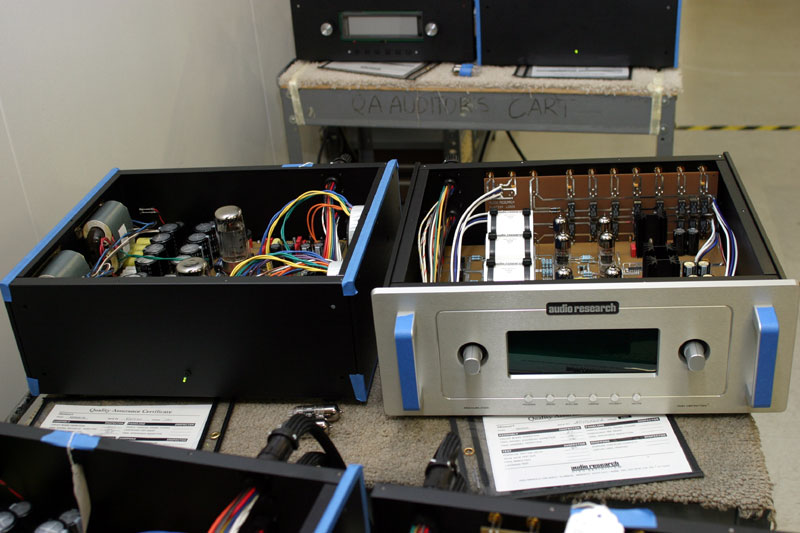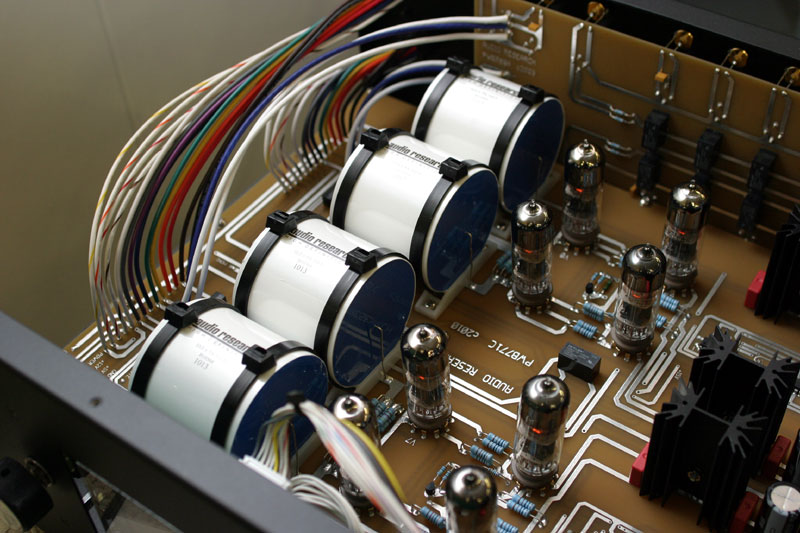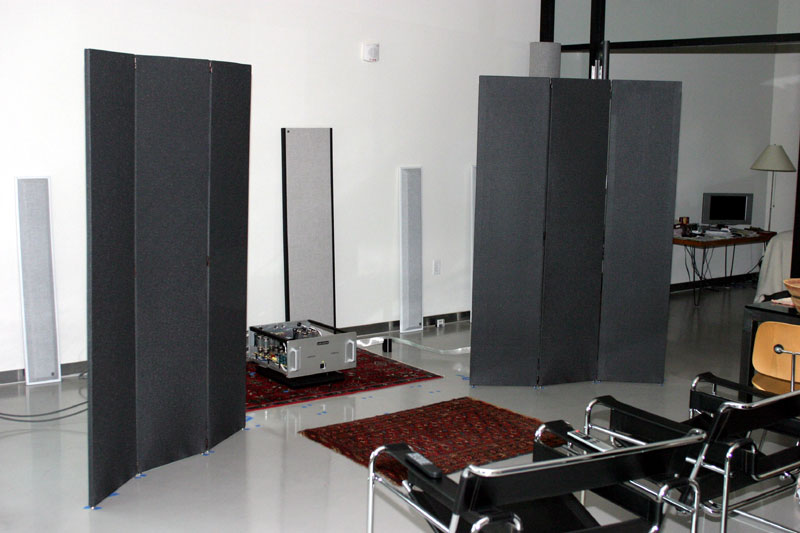Casual Revelations: Audio Research's Reference Anniversary Preamplifier
few weeks before Marc Mickelson and I visited to hear his finely tuned audio system, Warren Gehl, Audio Research’s chief listener (now is that a gig or what?), called to tell me he had something special for me to hear. Curious, I immediately asked what it was, and he let me know that the component in question was Audio Research’s new Reference Anniversary preamplifier ($24,995). Two days later I was in Warren’s listening room with CDs in hand.
The Reference Anniversary is both an homage to and a hyper-modern extension of Audio Research’s esteemed line of two-chassis preamplifiers, which extends back nearly 30 years to the legendary and still-coveted SP-10. The Reference Anniversary is, naturally enough, a two-box unit kitted out with a massive power supply and a highly sophisticated, cost-no-object riff on the already-superb Reference 5’s audio circuitry. Peeking inside, one sees a truly enormous amount of storage capacity in the power supply (more than the Reference 110 power amplifier's, according to Warren) and nearly fist-sized custom-made capacitors in the audio chassis. The preamp is honest-to-Pete fully dual-mono from the point the power cord enters the supply chassis; the surprisingly minimalist audio circuit employs four 6H30 tubes on each mono circuit board. Presentation is ultra-luxe, and the fit'n'finish are everything one should rightfully demand for a $25,000 price, which makes the Reference Anniversary the most costly preamplifier the company has ever made by more than a factor of two.
The Reference Anniversary's "nearly fist-sized" capacitors. Warren’s system was familiar to me, and one of the handful or so of the finest systems I have heard. Normally it is based on Audio Research’s CD5 CD player, Reference 5 line stage, and Reference 110 stereo amplifier. His speakers are unique: a pair of early-1970s Magnepan Tympani I-Us painstakingly remanufactured to their original specifications, save for the capacitors in the crossover, which have been replaced with modern, tight-tolerance parts. (As an aside, this pair of tri-panel Magnepans dates from the days when the marque was distributed by Audio Research -– these are seriously old-school speakers.) His room is large and high-ceilinged -- not ideal, at first viewing, for maximal audio performance. The thought of how many man-hours of listening and tweaking Warren has put into setting up these speakers to get the level of performance I have heard makes me break out in a cold sweat, and I have spent years with Apogee Duetta Signatures. (They’re in storage now, waiting for their owner to move into a space worthy of them.)
We first listened to the system, which I have heard on many occasions, with the Reference 5 at its center. I have heard the Reference 5 in several systems, including my own, and it has never failed to impress me as being one of the very finest line stages currently available. I played some music I know intimately and which I had heard through Warren's system on several occasions; Warren then played some fine tunes both new and familiar. The sonics were stunning, with an immense, look-into-it soundstage, outstanding speed, convincing imaging and a truly bewitching timbral correctness. Yes, one could ask for deeper bass and more sheer slam (I do like my Kraftwerk and Kruder & Dorfmeister), but this was a completely enveloping audio experience. Then Warren swapped in the Reference Anniversary, which had been calmly warming up on the other side of the room. We listened to the same music again. Every now and then the dedicated audio enthusiast has an experience that can only be described as transformative. I know -- I had one when reviewing the Halcro dm58 amplifiers for Stereophile back in 2003. Suddenly, your frame of reference is drastically realigned and a new sense of what is possible manifests itself. This was one of those moments. Everything, and I mean everything, expanded, was focused more finely, and improved, in some cases more dramatically than I could ever have expected. Bass extension was deeper and pitch definition was appreciably sharper. The already superbly delineated soundstage was larger and better focused in both macro and micro aspects. Dynamics took a significant leap, and timbres became even more natural. Music flowed into Warren’s room in a way outside of my prior experience. As good as the Reference 5 is, and it remains a singular accomplishment, the Reference Anniversary shows what is possible when some of the finest and most experienced audio designers in the world can do when all constraints, particularly those of cost, are discarded in the name of excellence. Audio Research will make the Reference Anniversary preamplifier for a period of one calendar year from its date of introduction in late April. The one consolation is that the company will build as many preamps as they obtain orders for during the course of that year, and according to the lads at Audio Research, they are selling at more than three times the rate they projected at this point. If you care about the outermost bleeding-edge potential
of audio performance, you must hear this preamp. To borrow a quip from a Monty Python
sketch, it is truly something other than else. |



